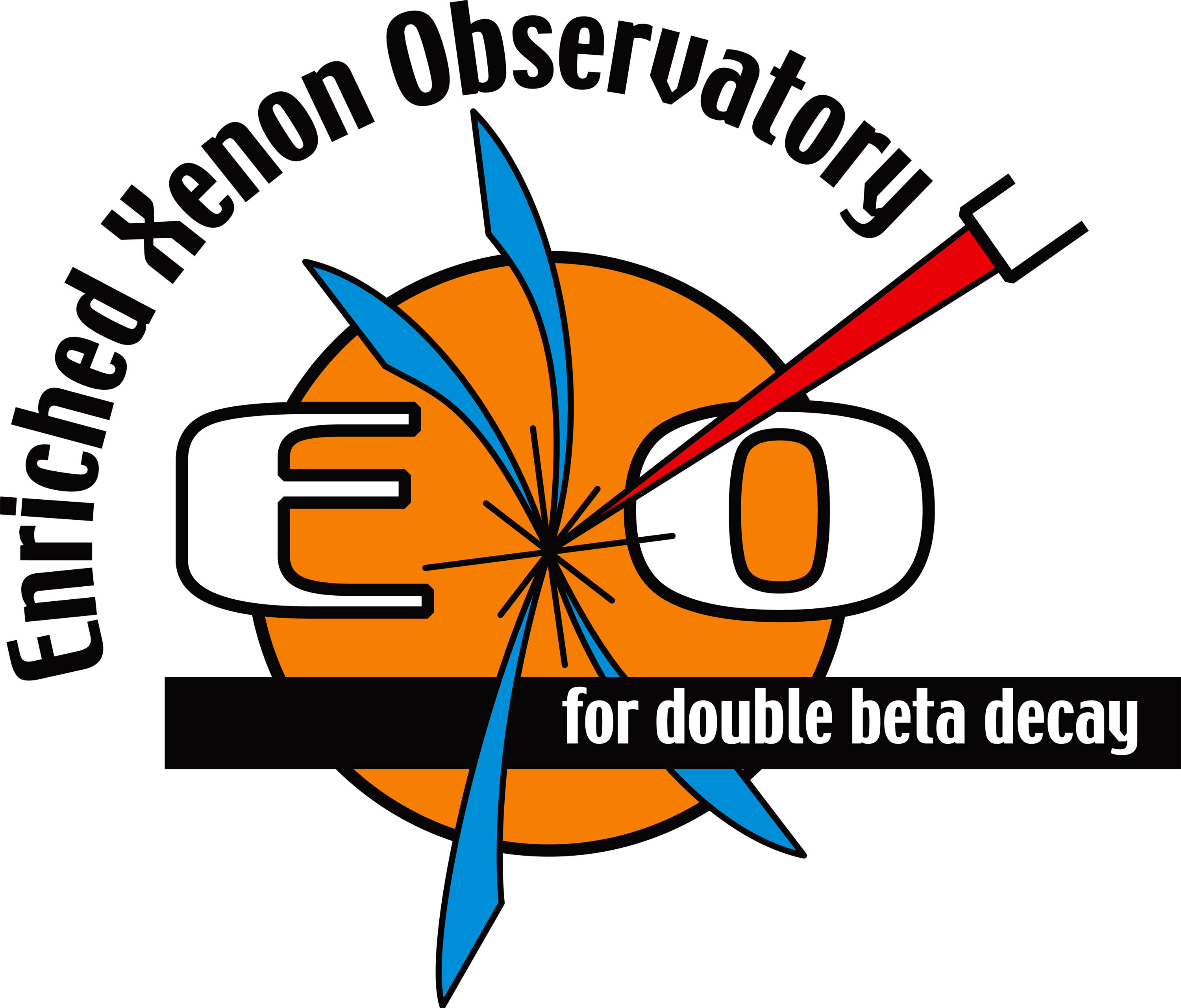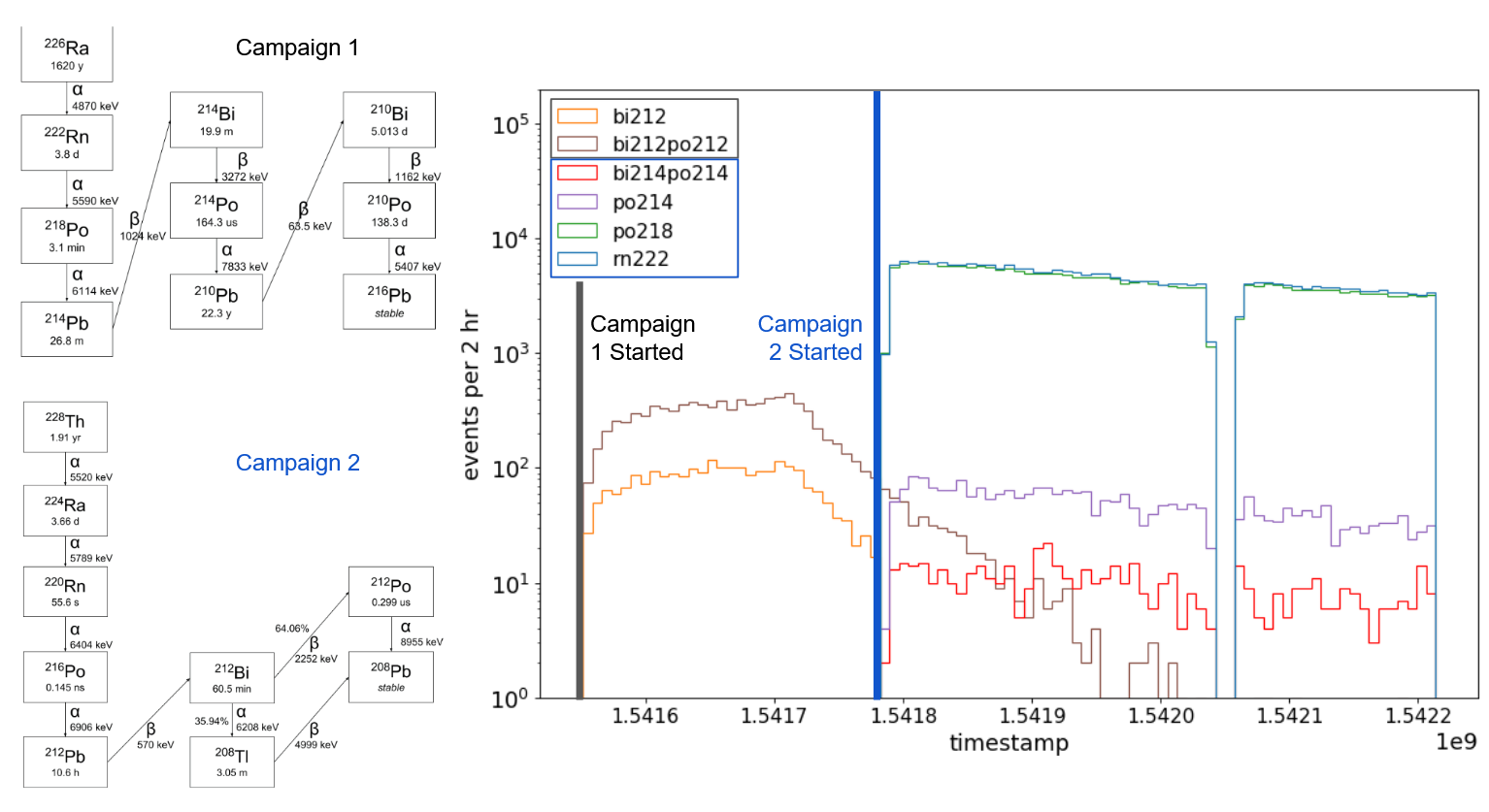EXO-200 and nEXO
Neutrinoless Double Beta Decay in Xe-136


Ph.D. Physics, Drexel University
My dissertation focused on charge and light calibration for the nEXO neutrinoless double beta decay experiment; this included the analysis of data from a dissolved radon source deployed on EXO-200 (manuscript in preparation) and a proposal for a radon-injection calibration scheme for nEXO; this technique flushes alpha-emitting nuclei into the center of the detector with high-scintillation, low-ionization signals — ideal for calibrating the detector response to light as a function of position (‘lightmap’)

I also developed a novel algorithm to combine SolidWorks fluid flow simulations of nEXO with the Geant4-based nEXO Monte Carlo; my algorithm predicts the number of decays in the central detector region as a function of time after radon is injected. In combination with resolution requirements from the nEXO lightmap framework, this will drive design constraints for the full-scale nEXO radon injection calibration campaign.
Other work on nEXO
Liquid xenon switching purity monitor: I contributed to the design and construction of a liquid xenon switching purity monitor; the novel design drifts an electron cloud into a region where the electric field is switched at a kHz frequency to artificially extend the drift length. Simulations performed at Drexel suggest that this method can measure lifetimes at the 10 ms scale required to achieve sufficient energy resolution in nEXO.
Solid xenon bolometers: In an effort to understand microscopic anticorrelation phenomenon in cryogenic liquid xenon detectors, Drexel University is building a cryostat to grow solid xenon bolometers. This technology offers insight into the previously unmeasurable phonon energy channel in liquid xenon.
